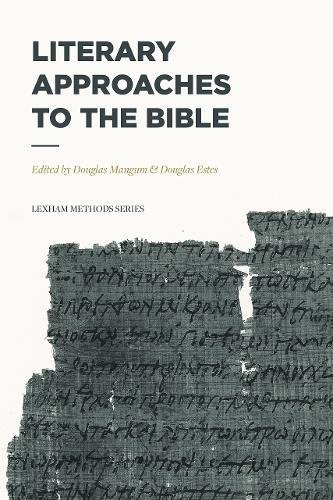A Book Review from Books At a Glance
By Timothy Spears
Introduction and Brief Summary
Literary Approaches to the Bible, edited by Douglas Mangum and Douglas Estes, summarizes and evaluates the various methodologies found within the broad field of literary criticism. The contributors’ work is quite thorough and comprises all the areas for analysis of the text in the Old Testament, the New Testament and intertextuality within the Old and New Testaments and between the testaments. The methods included are Canonical Criticism, Narrative Criticism, Rhetorical Criticism, Structural Criticism, Post-structural Criticism and Inner-Biblical Interpretation. Their essays follow a typical pattern which includes a comprehensive definition, a thorough description, an overview of the various methods within each field, a comparison of the particular discipline to other criticisms both within literary criticism and outside of it (i.e. Historical, Form, Redaction, Source Criticism, etc.), a method with key features and best practices, examples, limitations/weakness, and finally a robust bibliography for further reading. This volume is successfully a one-stop shop for those who want a good introduction to the fields within literary criticism without breaking the bank or spending hundreds of hours sifting through the major authorities in each field.
Critique
This book has several strengths that make it a resource to be kept on the shelf of a Biblical scholar or advanced seminary student. First and most importantly, this book does an excellent job with definitions, unpacking key terms and differentiating usage between authoritative scholars. This has been a common frustration for students and newcomers. Scholars use words differently and with different nuances without warning or explanation. The authors’ laborious work of clarifying terms and concepts was very helpful throughout this volume.
Secondly, this book is comprehensive in its summaries, including the relationships between each criticism and with the other higher critical methods. This is also incredibly helpful as many of these criticisms do indeed overlap. Clearly comparing and differentiating between the criticisms assists those who are considering the benefits and unique contributions that each discipline offers.
Lastly, the contributors do an excellent job in explaining the historical context in which each of these fields were birthed and developed. The introductory essay is worth its weight in gold. It describes how literary theory has impacted Biblical studies and where it could be headed.
Though cautious and acknowledging deficiencies, the authors do endorse and encourage the use of the higher criticisms along with all of the literary critical methods as “various tools in our tool box” to ascertain meaning from the text. This was very surprising, considering some methods are much more concrete producing clear and concise conclusions, while others are much more extreme with no apparent anchor, no clear direction, or objective meaning. Take for example Canonical Criticism compared and contrasted to Poststructural Criticism. The former has much in common with the historical grammatical method while the latter does not. It seems to be impossible to use these methods in a complementary fashion to ascertain the final meaning of the text. Poststructural Criticism rejects a traditional reading of the text regardless as to whether it is correct or incorrect. By definition it is deconstructing the text and offering its own unique new conclusion.
Secondly, the writing style was very dry with many quotations from authorities in each field. Of course, this could just be the nature of the sort of summaries, but the reading was often tedious and created a challenge to stay engaged. It does not seem to be a book that keeps the reader on the edge of his seat. With that being stated, if one views this as a reference volume to be consulted, it is improbable that one would have this experience.
The last critique concerns the conclusion of the volume. The editors do not have any concluding essay. This may be nitpicking, but the book ended abruptly and considering the nature and trajectory of Poststructural Criticism it seemed to end on a rather negative note without tying up loose ends or looking positively to the future with a challenge to change direction.
Conclusion
This book is a great resource provided one understands its background and purpose. It is not for everyone. I would recommend it for a seminary student who is pursuing an advanced degree in Biblical studies and needs to have a solid grasp on the various fields within higher criticism and specifically literary criticism. The book does an excellent job situating literary criticism and its fields within that broader context. It can also be a very effective tool for the college or seminary professor who is teaching an introductory course to NT or OT who wants a solid overview of literary criticism and its methods but does not have the time or the funds to investigate each specific field independently. Lastly, it could be used by any mature Christian who enjoys church history and wants to better understand the way that critical literary theory has impacted biblical studies and to see the fruits of that influence.
I would not recommend this book to be used in a church setting or in an inductive Bible study. Although some of these approaches do have limited benefit for Biblical Interpretation, the diversity of those methods and radically different conclusions do not in bring clarity to the text or a beginning interpreter closer to the true meaning of the text. Moreover, the examples were limited enough that I do not think someone would become effective enough in any one discipline. Meaning, if the reader plans on practicing any one of these disciplines, he will still probably need to purchase a handbook that provides more examples for practice with more guidance for its application. For someone in the church who is not familiar with Higher Criticism, he should not read this book or attempt to use it as a resource for Biblical Interpretation.
Timothy Spears
